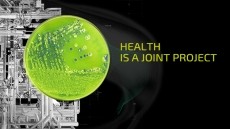Levitation tech could aid separation, mixing in pharma
fields in a way that allows some of the heaviest solid materials to
be levitated, raising the prospect of a new way to separate and mix
particles in the pharmaceutical industry, reports Phil
Taylor.
The researchers, headed by Professors Laurence Eaves and Peter King of the University of Nottingham have successfully levitated diamond and some of the heaviest elements, including lead and platinum, using the technique.
Using liquid oxygen to increase the buoyancy created by a specially designed superconducting magnet, they could now, in theory, levitate an object with a density 15 times larger than that of osmium, the heaviest metal known in nature.
Writing in the free-access New Journal of Physics, the team describes how mixtures of oxygen and nitrogen in liquid and gaseous states provide sufficient buoyancy to levitate a wide range of objects, including diamonds, a £1 coin and heavy metals such as gold, silver, lead and platinum.
Some materials, called diamagnetic, tend to become magnetized in a direction opposite to the magnetic field being applied to them. Magnetic levitation occurs when the force on such an object is strong enough to balance the weight of the object itself. If the object is immersed in a fluid such as a gaseous oxygen, the levitation can be given a helping hand by buoyancy caused by the 'magneto-Archimedes' effect.
Liquid oxygen is highly combustible and potentially dangerous to work with. However, it makes it much easier to float dense objects using commercially available magnets because the inherent magnetism of each molecule of oxygen boosts the buoyancy effect. This allows the levitation of objects as heavy as gold with relatively low-power magnets.
Professors Eaves and King and their co-workers have now investigated the use of a safer mixture of liquid nitrogen and oxygen, and found the optimum mixture for floating heavy objects in safety, making commercial applications of this technology possible.
In an interview, Prof King said that the concept is still very much in the early stages of development, but theoretically could be used for a range of pharmaceutical mixing and separation applications.
The growing use of particles at nanometre scales means that finer and finer powders need to be separated, but they tend to be affected by cohesive forces that can cause clumping. The levitation technology could be used to separate out powder of different densities, for example.
Also, the powders that re combined in a tablet, such as the active pharmaceutical ingredient (API) and inactive excipients, often exhibit a marked tendency to separate. The application of this magnetic field technology would counteract that tendency, and keep the mixture more homogeneous, he suggested.
That said, the earliest applications of the technology are likely to be in the mining industry, for example as a method for accurately filtering precious gems such as diamonds from the surrounding rock and soil.
Prof King said: "You can use this technology to accurately sort minerals. Under vibration you throw crushed ore into the air and in the magnet the different components experience different effective gravity. They therefore tend to land at different times and after a short while the vibration sorts them into bands according to their density. The method can discriminate between components with very small differences in density enabling you to extract the precious parts you require."
A prototype of the system is currently being built at the University, which hopes to soon start talking to companies interested in developing potential applications for the technology.












